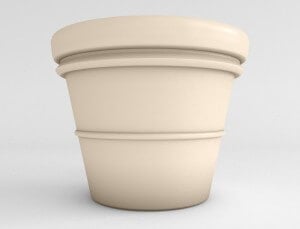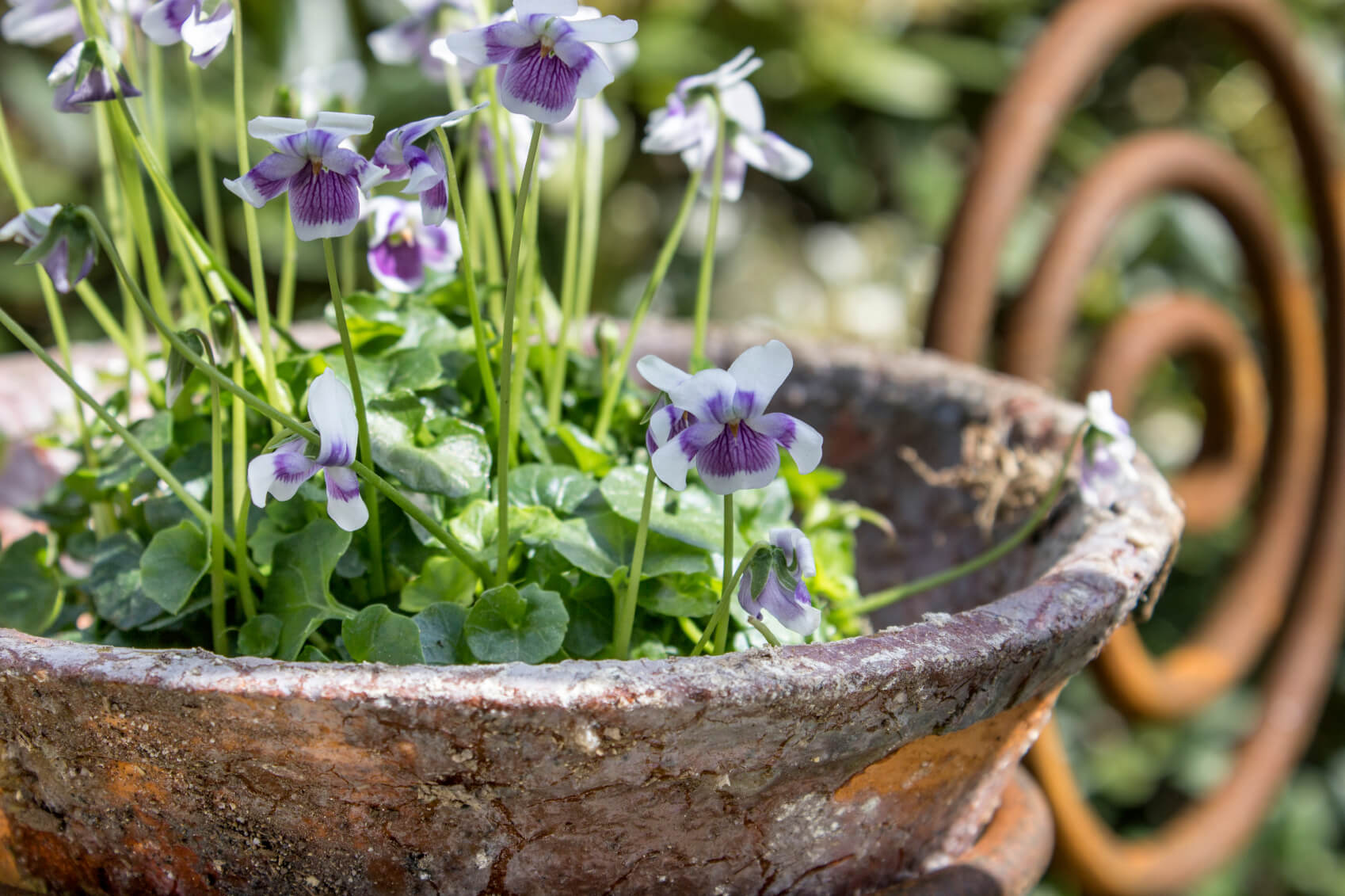Metal planters are often advertised as a great option but before you stock up on them there are a number of drawbacks to metal planters you need to know about. Metal and flowers seem contrary to one another, metal is so industrial and flowers are so beautiful, yet in some situations this appearance works. Many are drawn to the modern, cotemporary look metal planters made of copper, galvanized zinc or cast iron offer. Yet, there are a number of drawbacks to metal planters that outweigh physical appearances. Our specially formulated resin-based planters can be made to imitate the look of any materials, all while dissolving the many drawbacks to metal planters.
Before going with metal planters keep these 6 drawbacks in mind…
1. Metal Attracts Heat, Cooks Plant Roots
One of the main issues associated with metal planters is that the material attracts and absorbs a tremendous amount of heat. As a result, your plant soil and roots become hotter than they should be, in many cases causing the roots to completely overheat from direct sun. This process is made increasingly worse because of the poor insulation of metal planters. To help reduce root damage you will need to use some sort of additional insulation such as a plastic pot liner or clay, although these can contribute to other sets of issues.
2. Fertilizer Salts Damage Some Metal Finishes
Metals come in all different types of finishes; fertilizer salts naturally damage some of these finishes. In other words, despite the fact they are sold as planters some aren’t even meant to hold up when exposed to soil. (Reference)
3. Health Risks Associated With Metal Planters
Old-fashioned lead planters are inarguably toxic to soil. Some people are also opposed to using galvanized steel planters because of the potential zinc they release into the soil, which may be harmful to edible food, plants and soil. Some argue it would take so many years for the zinc to impact the soil that the plants and foods there will be long gone before they are impacted.
Acidic plants present the biggest risk as the acid works to dissolve the zinc causing higher levels to leach out into the surrounding environment. At the end of the day it’s a controversial subject with a number of differing opinions. Your best bet is to avoid it all together so you don’t have to worry about it. (Reference)
4. Potential For Rust Is High
When you think of rust, metal is one of the first materials to come to mind. That’s because metal is notorious for rusting, and your metal planters won’t be any different. Planters are typically exposed to a lot of water and as a result they rust even faster.
If you live somewhere with a lot of rainfall or humid sub-tropic weather you may need to add a non-toxic rust inhibitor to prevent your planters from rapidly deteriorating. Otherwise, they will need to be kept out of the elements, such as inside or under a sturdy cover.
5. Heavy Metal
No, we don’t mean heavy metal rock music… instead we mean your metal planters are going to be HEAVY! Depending on the type of metal, weight will vary. If you go with cast iron, for instance, your planters are going to be too heavy for balcony gardens and too heavy to move on your own.
6. Metal Is Non-Porous
Metal is nonporous which means it will not drain naturally. In other words, if you overwater your plants even just a little bit this water will begin to pool and build up at the bottom of the planter. As a result, your roots are at risk for becoming a moldy, rotten mess. Standing water attracts bacteria of all kinds, and this is something you really want to avoid. Make sure your metal planter has some drainage holes at the bottom to help release this build up of water.
Your best bet for healthy plants is a self-draining planter made of resin. (Reference)
But What About The Metal Planters I See Around Town?
When you see metal planters you might be surprised to find out they are sometimes used as a decoy of sorts. People who really enjoy the look of metal planters but don’t want to deal with all of the drawbacks often plant in a different planter, which is then fitted inside of a larger metal container.
If someone is solely using a metal planter they are going to deal with all of the issues listed above, regardless if issues have had a chance to start up yet or not.
 TerraCast Resin Planters
TerraCast Resin Planters
TerraCast resin planters offer a world of benefits over metal planters. Every drawback to metal literally disappears when you make the switch to our resin-based planters. We are proud to offer a product that defies the elements so much better than traditional planters made of all materials, not just metal.
TerraCast Planters come in all shapes, sizes, colors, and can be personalized any way you want. They are also…
- Resistant to pet waste, weather and most other elements found outside.
- Resistant to rust no matter how much it rains or how humid your local environment may be.
- Resistant to corrosion. Once the process of corrosion starts it is impossible to reverse. As a result, you don’t want to give it a chance to begin at all.
- Will not stain due to graffiti, all stains can be easily cleaned off.
- Durable against all kinds of potential damages, including getting knocked into by golf carts, people, weed whackers, etc.
- Lightweight for easy transportation of planters. Plus, you save on shipping costs if you plan to order in bulk.
TerraCast Products ensures you can enjoy beautiful planters personalized to look any way you’d like, built to last for many years to come. Check out our vast selection of planters today!

